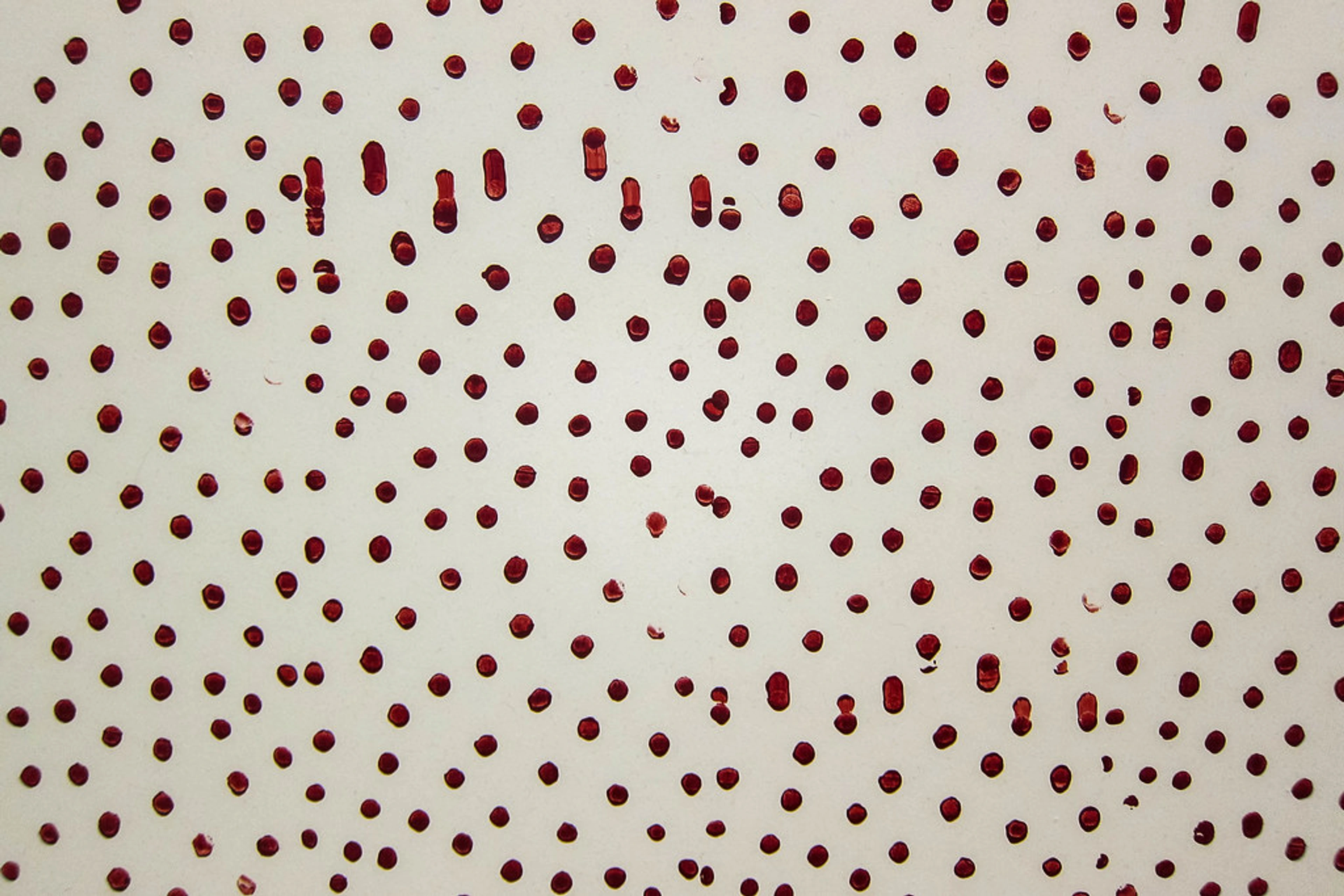
Mark-Making in Abstract Art: My Personal Journey & Techniques
Dive into the profound world of mark-making in abstract art. Explore its emotional power, historical significance, and diverse techniques. Discover how expressive lines, textures, and even accidental imprints create a unique visual language, and learn to find your own artistic fingerprint.
The Art of Mark-Making: My Personal Journey with Expressive Lines in Abstract Painting
Hello, fellow art adventurers! There’s something profoundly intimate about a mark, isn't there? It’s a direct imprint of a moment, a thought, an emotion – a fleeting whisper made permanent. Fair warning, this journey often gets a little messy, like my studio floor after a particularly inspired session, but trust me, it's worth it. In the often enigmatic world of abstract painting, where the obvious figures or landscapes fade away, these spontaneous or deliberate lines, dots, scrapes, and smudges don't just fill space; they become the very visual language of the canvas. For me, "mark-making" isn’t just a technique; it’s a dance between my intuition and the material, a spontaneous conversation that breathes an almost-human life into the otherwise blank space. It’s where the canvas truly begins to speak, and my hand becomes its voice. This article is a deeply personal exploration of mark-making, offering insights into its power, a glimpse into its rich history, a peek at my favorite techniques, and practical advice on how you can uncover your own unique artistic fingerprint.
What Even Is Mark-Making, Anyway?
You know that feeling when you absentmindedly doodle on a notepad during a long phone call? Or when you trace patterns in condensation on a windowpane, leaving a temporary ghost of your thought? That’s mark-making at its most basic: simply making a visible impression. Think of the intricate patterns of a bird's tracks in fresh snow, the ephemeral trails left by fingers on a steamy mirror, or even the persistent ghost of a coffee ring on a wooden table. Beyond the domestic, consider the rugged lines carved by erosion on a mountain face, the chalk marks on a construction site outlining future structures, the transient trails of an airplane against a vast sky, or even the subtle pixel trails left by a digital brush on a screen. These aren't just random occurrences; they are all, in their own way, marks.
In the realm of art, it's the purposeful (or sometimes wonderfully accidental, and that's often where the magic lies) application of an art tool onto a surface, leaving a unique trace.
When I first dipped my toes into abstract art – a messy, exhilarating dive, by the way, if you want to know more about how to abstract art – I was so focused on color and composition. But over time, and through countless hours of just doing, I realized the true magic lay in the individual marks. Each stroke, each scrape of the palette knife, each drip tells a mini-story. It's not unlike writing a poem without words, where every scribble is a visceral syllable, and every texture a silent, knowing whisper.
Mark-making, especially in abstract art, walks a fascinating line between deliberate intention and happy accident. While some marks are meticulously planned, others emerge from a spontaneous gesture or an unexpected interaction with the medium. The trick isn't to avoid these 'accidental' marks, but to learn how to respond to them, integrate them, or even cultivate them, transforming chance into expressive opportunity. It's less about strict control and more about a responsive dialogue with the canvas, allowing the unforeseen to contribute to the unfolding narrative.

The Whispers and Shouts of the Hand: Why Marks Matter in Abstract Art
If that's what mark-making is, then why do I, or any abstract artist, obsess over something as seemingly simple as a line or a dot? Because marks are the raw, unfiltered expression. They're the very DNA of abstract painting, the foundational language that transcends literal depiction. They speak directly from the artist's deepest self to the viewer's subconscious. They don't just convey emotion; they contribute to the overall composition, creating rhythm, balance, and visual interest, guiding the eye across the canvas.
Beyond the Brush: A Symphony of Tools and Mediums
When you think of painting, a traditional brush probably comes to mind, right? But the beauty of mark-making is its boundless potential, extending far beyond bristles. My studio is a treasure trove of unconventional tools, each holding the promise of a unique trace. Sometimes it’s a simple basic brushstroke, loaded with paint, dragged across the canvas with a swiftness that captures the breath. Other times, it’s the side of a palette knife creating a sharp, textured ridge – I’ve written extensively about my palette knife, my voice, it’s truly an extension of my hand, almost a co-conspirator. I've even found myself grabbing credit cards, sponges, combs, or just my bare fingers! Anything that leaves an interesting trace is fair game, transforming the mundane into the miraculous.
And it's not just the tool, but also the nature of the paint itself – its viscosity (how thick or thin it is), its opacity (how transparent or opaque), its flow – that collaborates with the tool and the application method itself to define the mark's character. Moreover, the addition of various mediums like fluid acrylics, impasto gels, or flow improvers can dramatically alter how paint behaves, allowing for finer lines, thicker textures, or more subtle washes. A swift flick of the wrist, a slow drag, a deliberate pour, or a gentle dab will each coax a different language from the same tool and paint. It's like the subtle difference between a whisper and a shout, determined by how the air (or paint) is pushed.
These varied tools aren't just for novelty; they each contribute a distinct character to the mark. A soft sponge dab creates a gentle whisper, barely there, while a hard scrape with a ruler screams with defiant clarity. It's about building a rich visual vocabulary, each mark a word or a phrase in a silent, profound narrative.
Emotion on the Canvas: Speaking Without Words
This is where mark-making truly shines for me. It's the most direct conduit for emotion. A jagged, frantic line, executed with speed, can convey anxiety, raw agitation, or explosive energy. A soft, meandering curve, applied slowly and deliberately, might evoke calm, introspective contemplation, or quiet melancholy. A series of thick, impasto marks can suggest robustness, unyielding certainty, or a deep-seated foundation. Consider the furious energy of cross-hatching conveying raw frustration, or the contemplative stillness evoked by stippling (creating a pattern with tiny dots) that seems to whisper secrets. Even a series of bold, detached impasto dots can suggest a resolute presence or a playful beat. And it's not just the individual mark; the combination of different marks can weave incredibly complex emotional narratives. A flurry of agitated scratches overlaid with a calm, expansive wash can evoke the storm within a peaceful exterior, for instance. It’s like watching an electrocardiogram of the soul unfold on canvas, each peak and valley a visceral feeling.
I often find myself letting my emotions guide my hand, sometimes without even realizing it until later. If I'm feeling restless, my marks become sharper, more erratic, almost a visual fidget. If I'm in a meditative state, they might be slower, more deliberate, building subtle layers of color and texture, like geological strata. It's a very personal dialogue, a way to pour my inner world onto the canvas without needing to depict anything literally. It’s how I start to decode abstraction for myself, and hopefully, it offers you a new lens through which to view the non-representational world. These visceral expressions are not merely artistic choices; they're echoes of the human experience, a testament to how artists throughout history have leveraged mark-making to communicate beyond words.
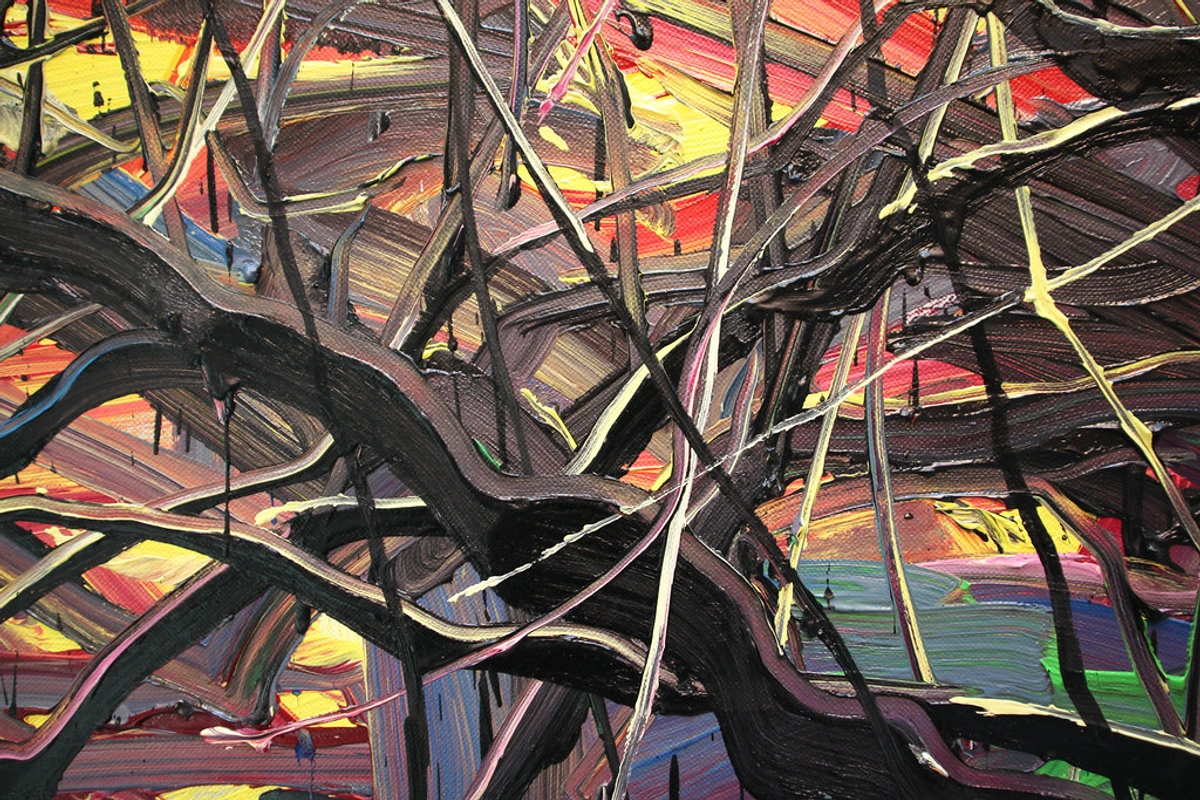
A Brief History of Expressive Marks
While mark-making is as old as art itself, its emergence as a central, celebrated element in abstract art truly blossomed with movements like Abstract Expressionism in the mid-20th century. This wasn't just a stylistic shift; it was often a philosophical one, born from post-war existential angst and a desire to communicate raw, unmediated human experience. Artists sought direct conduits to the subconscious, and the immediate, unedited trace of the hand became paramount. Before this explosive mid-century shift, however, artists were already laying the groundwork, exploring the emotional power of lines and shapes beyond literal depiction, even elevating the act of mark-making itself.
Wassily Kandinsky, often credited as one of the pioneers of abstract art, used vibrant, fluid lines and forms to evoke spiritual and emotional states, believing that pure form and color could directly access the soul, much like music. His deliberate, yet often intuitive, placement of lines and shapes aimed to create visual harmonies and dissonances that resonated deeply.
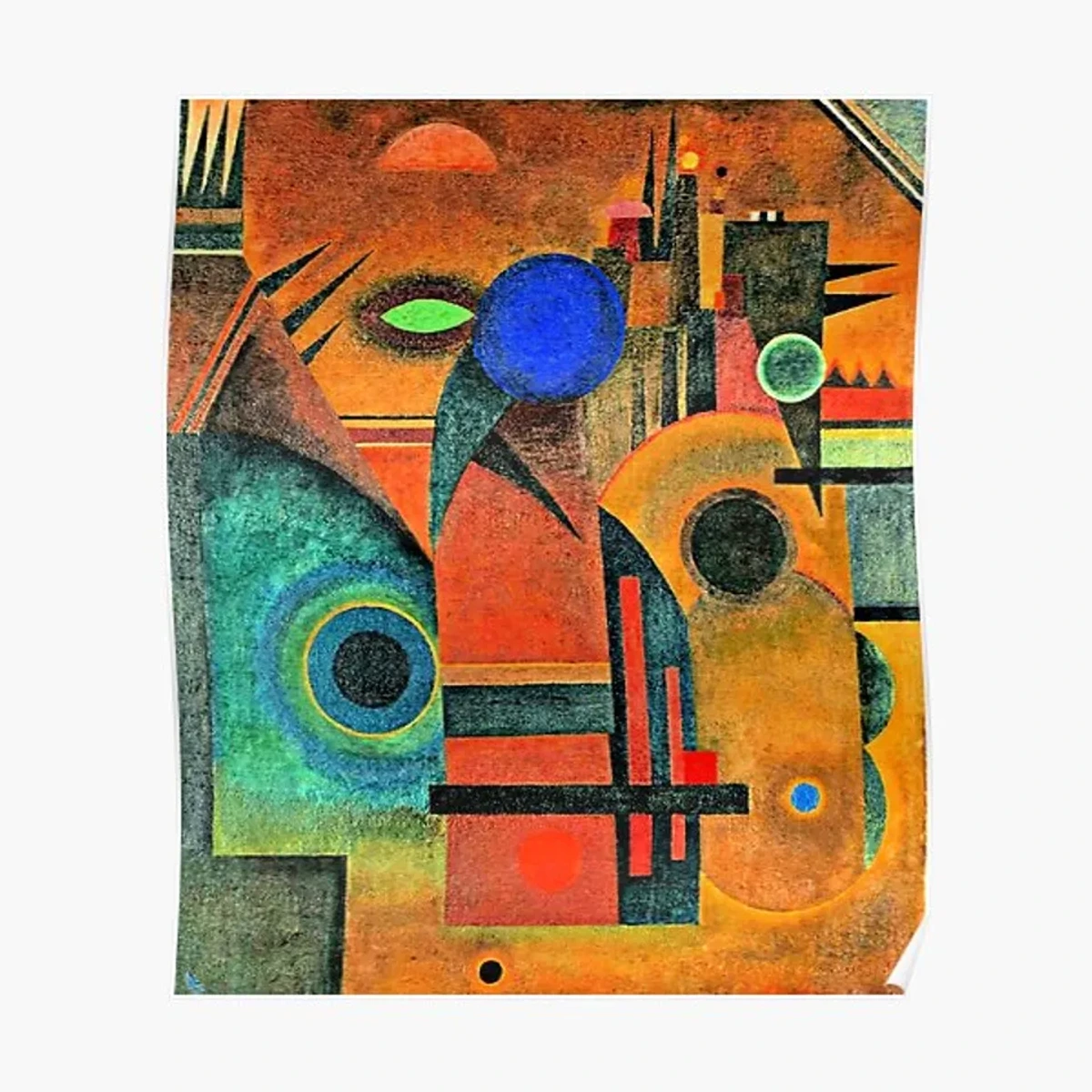
Later, Henri Matisse, particularly in his iconic cut-outs, elevated the simple, expressive line and shape to a profound level, demonstrating its inherent power without relying on traditional depiction. His 'drawing with scissors' was an ultimate embrace of the direct, unadulterated mark, focusing on the sheer impact and emotional resonance of pure form and line, free from the painterly gesture.
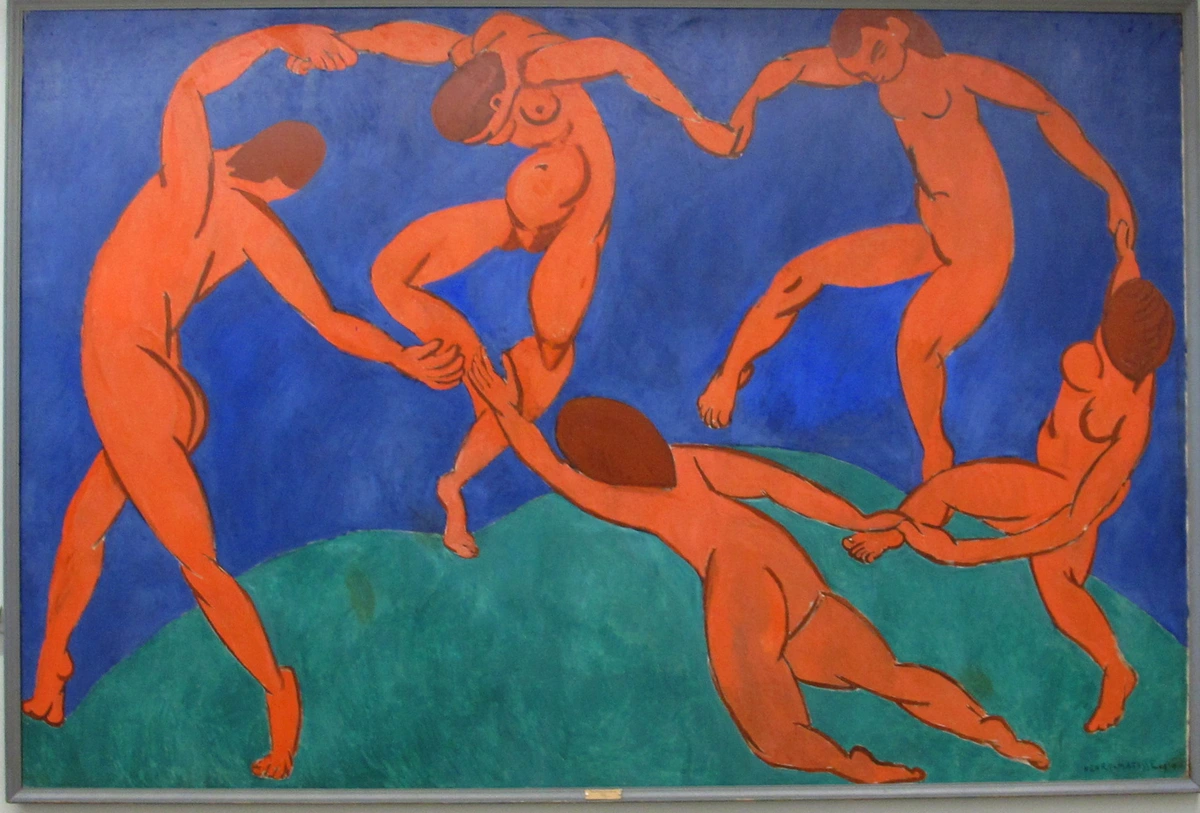
Artists like Jackson Pollock revolutionized painting with his chaotic yet controlled drips and splatters, making the act of painting—the mark-making itself—the subject. Pollock's 'action painting' was a direct record of his body in motion, a visceral performance captured on canvas, reflecting the urgency and psychological turmoil of his era. Willem de Kooning used aggressive, gestural brushstrokes that conveyed raw emotion and conflict, his marks often appearing to tear through the canvas, reflecting an internal wrestling match with form and feeling, while Cy Twombly's elegant, childlike scribbles and loops elevated the simple line into profound poetic statements, transforming primal urges into poetic visual poems that hinted at language without articulating it.
These pioneers, and others like Jean-Michel Basquiat with his raw, visceral lines and symbols, proved that the trace of the artist's hand could be as powerful, if not more so, than any meticulously rendered figure. Basquiat’s raw, urgent marks spoke of urban angst, social commentary, and a direct, untamed creative energy. They understood that a mark carries weight, history, and an undeniable human presence.
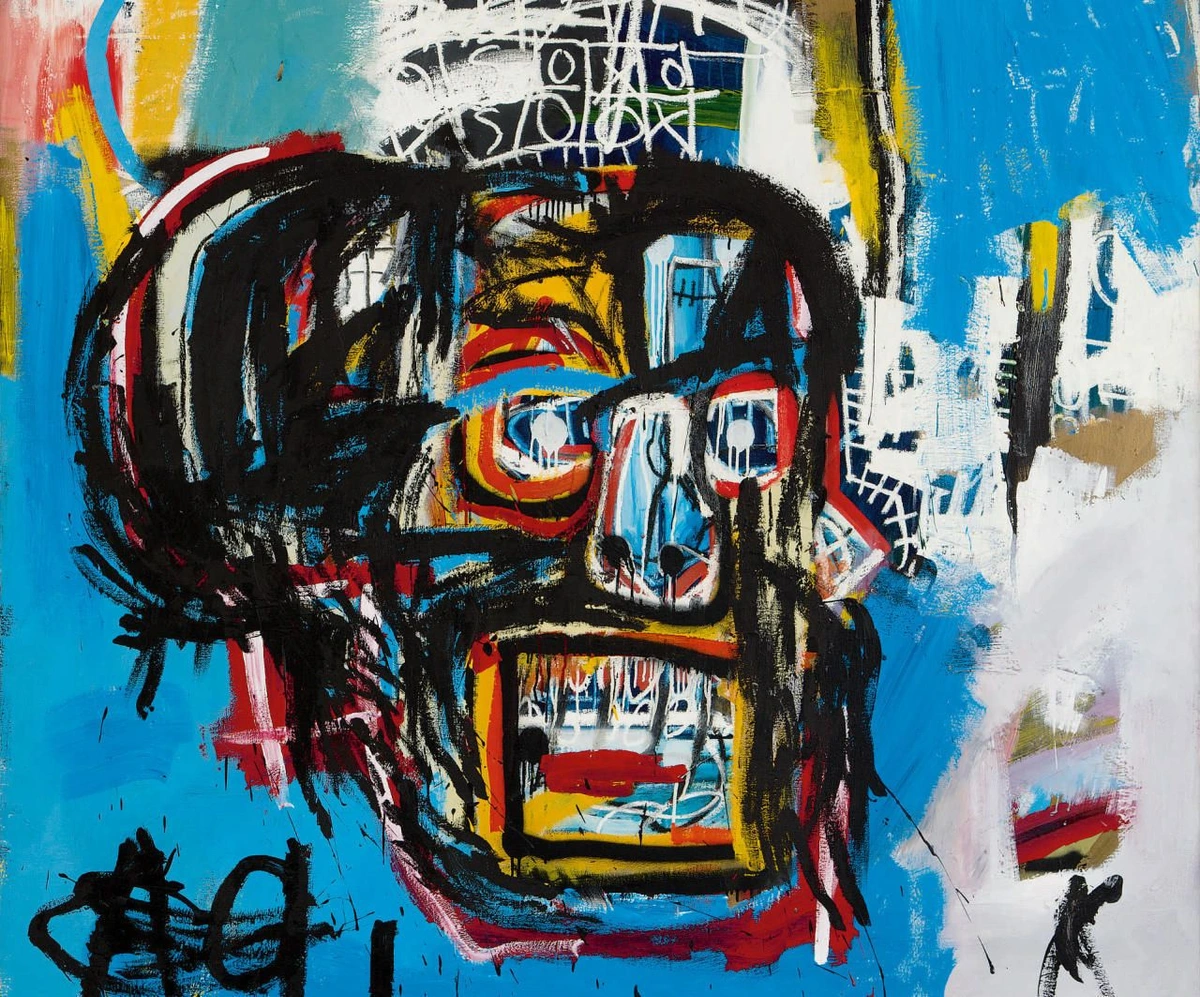
Mark-Making Across Abstract Styles: A Brief Overview
Beyond these historical figures, it's fascinating to observe how different abstract art movements harness mark-making to achieve their distinct artistic goals. In Lyrical Abstraction, marks often flow with a graceful, almost musical fluidity, emphasizing gesture and spontaneity to evoke an emotional response, often like a visual poem. Conversely, Geometric Abstraction might feature sharp, precise lines and clearly defined shapes, each mark meticulously placed to construct order and balance – a choice driven by a desire for intellectual clarity and universal harmony. Think of the controlled grids of Agnes Martin, where even the slightest waver in a pencil line becomes a profound human mark within an otherwise minimalist structure.
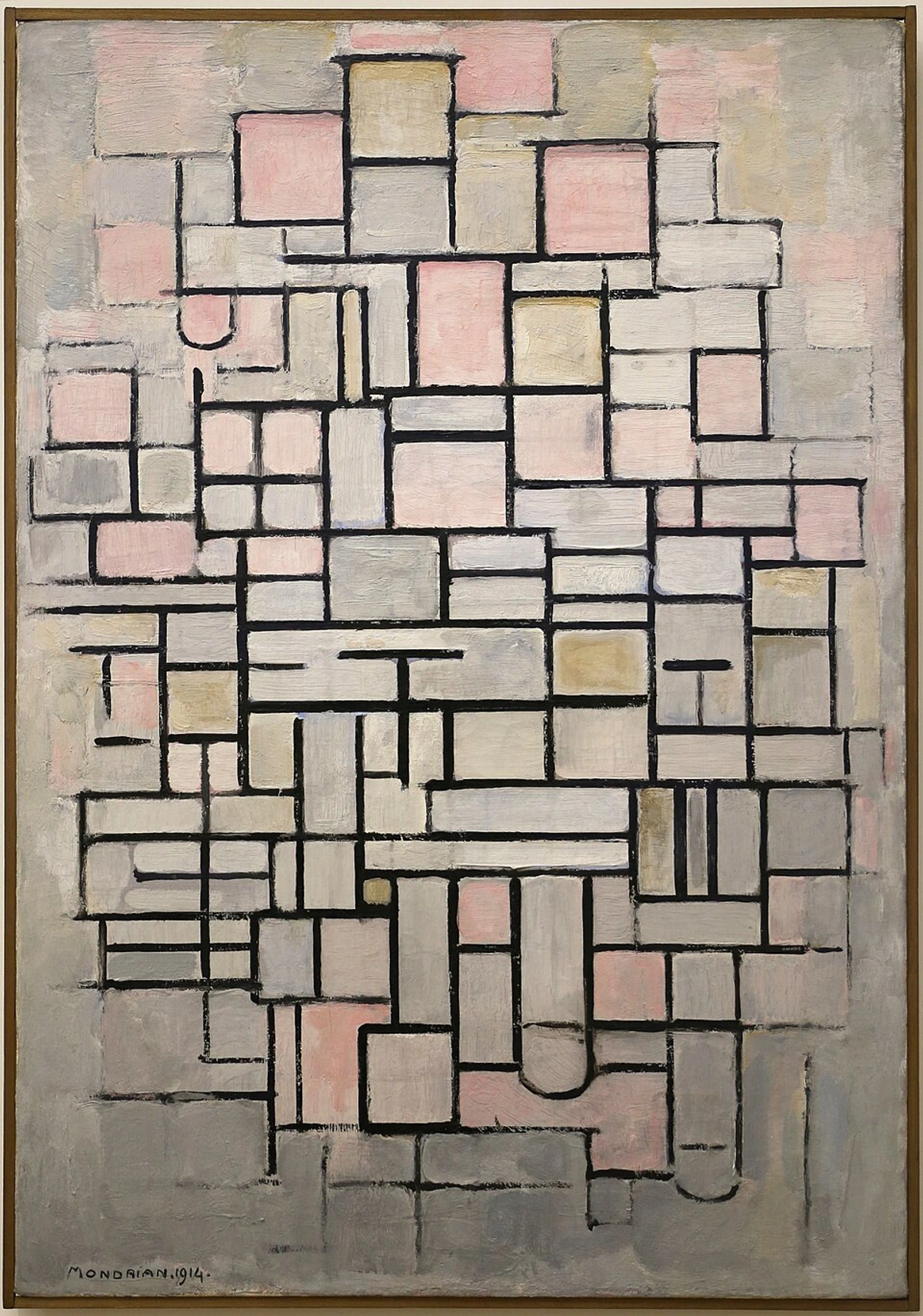
Action Painting, exemplified by Pollock, turns the very act of applying paint into the mark, focusing on the raw energy of creation and the direct physical engagement with the canvas. Even in Color Field painting, where large areas of saturated color dominate, the subtle edges, drips, or staining effects (like those by Helen Frankenthaler) are forms of mark-making that define the painting's unique character and visual impact – these less assertive marks invite contemplation rather than direct action. And it's not just traditional media; even in contemporary digital art forms, where a mouse click or stylus stroke is the 'mark,' artists are exploring new ways to express texture and gesture, pushing the boundaries of what a mark can be. Understanding these diverse approaches allows us to appreciate the sheer versatility of mark-making as a fundamental artistic language, capable of conveying everything from explosive energy to quiet contemplation.
Decoding My Canvas: Favorite Mark-Making Techniques
Seeing how others have wielded the power of the mark has deeply influenced my own exploration, constantly reminding me that the canvas is a place for dialogue, not just declaration. So, what kinds of marks speak to me? For me, my approach to mark-making is deeply tied to my creative flow. It’s less about rigid rules and more about embracing the moment, letting instinct lead the way. It’s like having a conversation with the canvas, where both of us are constantly surprising each other.
The Energetic Gesture
Sometimes, you just need to move! Gestural marks are all about spontaneity, speed, and raw energy. Think of a quick, sweeping brushstroke that crosses the canvas in seconds, capturing a fleeting thought or an immediate impulse. It’s less about precision and more about the feeling of the movement itself – the sheer exuberance of creation. I often start my pieces with these bold gestures, laying down the initial energy that will then inform the rest of the painting. It sets the tone, a sort of artistic warm-up, a dynamic foundation upon which more nuanced marks are built. I remember one time, feeling incredibly restless after a long day of administrative tasks, I just flung a huge brush across a canvas, releasing all that pent-up energy in one glorious, chaotic arc. That seemingly 'random' mark became the central dynamic force of the entire piece, an accidental expression of freedom.

The Subtlety of Scrapes and Layers
Then there's the nuanced beauty of subtractive mark-making. I love to apply a thick, often wet, layer of paint and then scrape through it, revealing the dry colors beneath or creating fine, delicate lines and ridges. This technique adds incredible texture and history to the piece. It’s like uncovering ancient hieroglyphs – each scrape tells a story of what was once there, of layers of time and intention. Gerhard Richter is a profound master of this, creating incredibly complex, almost geological surfaces with a simple squeegee. It’s a bit like life, isn’t it? Sometimes the most beautiful and interesting things are revealed not by what we add, but by what we thoughtfully, purposefully take away. There's a quiet satisfaction in seeing a vibrant underlayer peek through a scraped surface, almost like a secret being gently whispered.
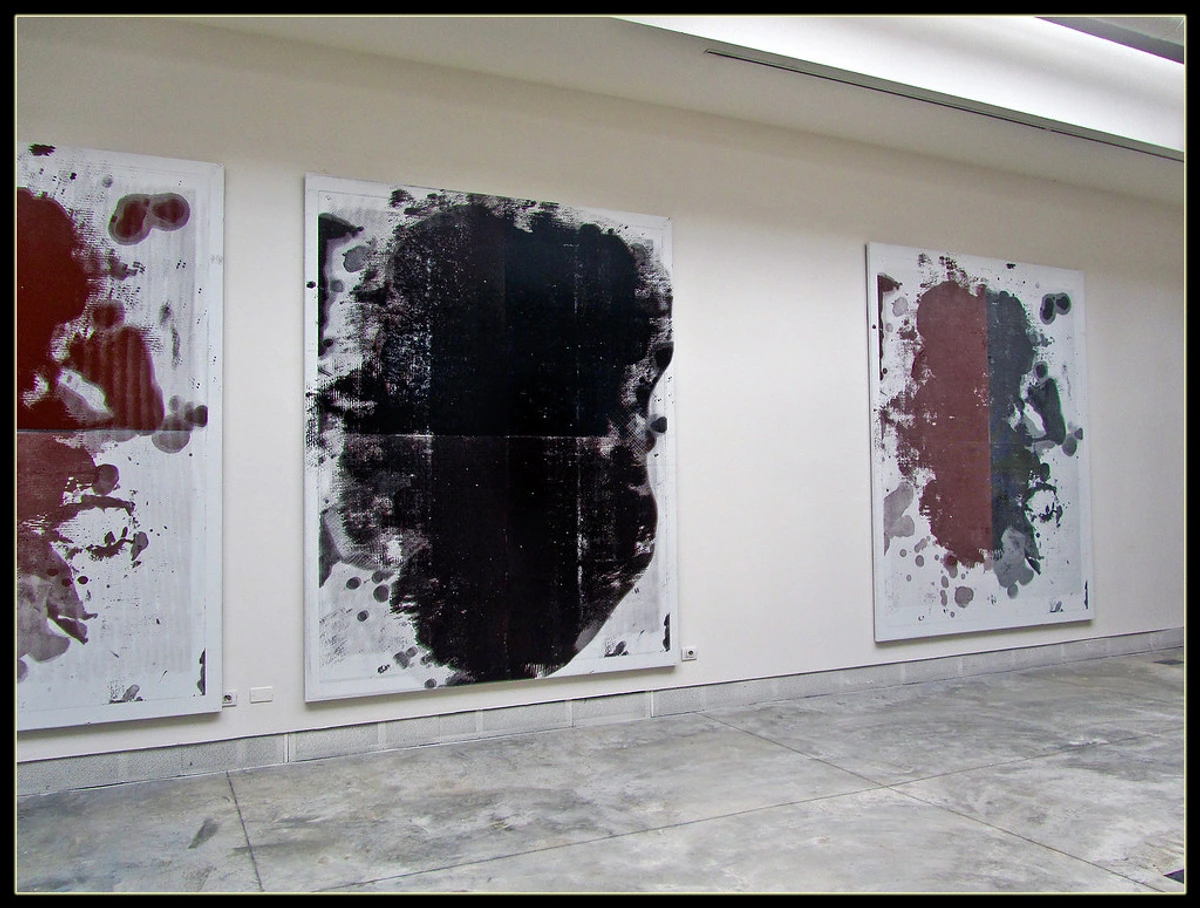
The Unexpected Dot and Dash: Rhythm and Focus
Don't underestimate the quiet power of seemingly simple marks. A solitary dot can be an anchor in a chaotic composition, a moment of stillness and focus. A series of dashes can create rhythm and dynamic movement without forming a continuous line, guiding the viewer's eye across the canvas. These smaller, often more deliberate marks act as counterpoints to the larger gestures, adding complexity, visual interest, and creating crucial visual breathing room. They help define and activate the negative space – the areas around and between the marks that are just as crucial to the overall composition. The absence of a mark, or the space between marks, can be as powerful as the mark itself, inviting contemplation and guiding the eye. It's the little surprises, the unexpected moments, that make a piece truly sing, guiding the viewer's eye through a carefully orchestrated dance of presence and absence, often highlighting specific focal points or creating pathways through the artwork.

Embracing the Accidental: Serendipity in Marks
While much of mark-making is deliberate, some of my favorite moments arrive through happy accidents. Sometimes, a drip goes astray, or a tool slips, creating an unexpected line or texture. Instead of seeing these as mistakes, I’ve learned to embrace them as opportunities. I remember one time, mid-painting, a gust of wind from an open window (my studio is full of quirks, like spontaneous breezes and the occasional curious cat) unexpectedly blew a fine mist of water across a freshly painted area, causing the pigment to bloom in a way I could never have intentionally replicated. It was a fleeting, perfect moment of chaotic beauty, completely transforming the energy of a piece, steering it in a direction I hadn't foreseen but instantly loved. It’s about creating controlled accidents or allowing for serendipitous interventions. The beauty lies in responding to the unexpected, integrating it into the unfolding narrative of the painting, allowing the work to evolve in directions I hadn’t initially planned. It's often in these moments of letting go that the most authentic and surprising marks emerge, adding an element of raw truth to the canvas.
What unexpected gesture or tool might unlock a new voice for you?
Finding Your Own Artistic Fingerprint
My journey with mark-making has been one of constant discovery, often leading to delightful, sometimes challenging, happy accidents. So, how do you find your unique mark, your own visual handwriting? Remember, the journey is often more important than the destination, especially when developing your personal style.
- Experiment Fearlessly: Grab whatever you can get your hands on – an old comb, a piece of cardboard, a crumpled paper towel, your fingers! See what kind of marks they make. Don't be afraid to "ruin" a piece; think of it as practice, a playful exploration. What unexpected tool is calling to you right now? What feeling are you eager to translate onto a canvas?
- Observe Your Mood (and Translate It): Actively pay attention to how your hand moves and what kind of marks emerge when you're feeling excited, calm, frustrated, or lost in thought. For instance, if I'm grappling with a problem, my marks often become tightly coiled and repetitive, almost like a visual metaphor for my mind circling a single thought. When I finally find a solution, the marks might suddenly expand, loosen, or flow with newfound freedom. Try to deliberately translate that inner energy, that personal rhythm, into a visible mark on your surface. Can you make your anger a jagged line, or your peace a soft blur?
- Study the Masters (and the Street): Look at the wild energy of a Basquiat, the controlled chaos and layered complexity of a Richter, or the bold statements of a Christopher Wool. Then look closer at the world around you: the cracks in a sidewalk, the texture of an old brick wall, the way water carves a path. What kinds of marks do you see? How do they make you feel? It's all about learning from the unspoken language of the world.
- Embracing Limitations: Sometimes, the most innovative marks emerge not from boundless freedom, but from deliberate constraint. Try working with a limited palette, only two tools, or even just one color. These limitations can force you to find unexpected ways to create variety and expression, pushing your creativity into uncharted territories. You might be surprised at the depth of expression you can achieve with less.
- Active Listening to Materials: Different paints, mediums, or surfaces will often 'suggest' certain marks or techniques. A thin wash on a rough canvas will behave entirely differently than impasto on a smooth panel. Listen to how the material responds to your touch, letting its inherent qualities guide your mark-making. Sometimes, the paint itself will tell you what it wants to do.
- Practice, Practice, Practice: Like any language, it takes consistent engagement to become fluent. The more you play, the more your hand will learn its own unique vocabulary, its own syntax, its own way of expressing what words cannot. Remember, your artistic journey is a process of continuous discovery.
Remember, there’s no right or wrong mark. The beauty lies in its authenticity, its direct connection to you, the artist. And if you find yourself creating something you love, or if this journey inspires your own collecting, you can always check out my art for sale to see if it sparks something within you.
FAQs on Mark-Making in Abstract Art
Q: What's the main difference between a "line" and a "mark"?
A: A line is a specific type of mark – typically a continuous stroke, often with a clear direction. A mark is a broader term, encompassing any impression left on a surface. This includes lines, but also dots, smudges, scrapes, textures, or even areas of color that behave like an intentional imprint. So, all lines are marks, but not all marks are lines.
Q: Can mark-making be taught, or is it purely intuitive?
A: Both! The physical act of making marks can absolutely be taught and practiced (e.g., specific brushstrokes, palette knife techniques, controlling drips). However, the expressiveness and personal voice in mark-making, the very soul of it, often come from intuition, emotion, and repeated experimentation. You learn the grammar, then you find your unique way to speak from the heart.
Q: How does mark-making relate to texture in abstract art?
A: They're intimately linked! Many forms of mark-making directly create texture, such as impasto (thick paint), scraping, frottage (rubbing), or dragging tools across the surface. Even flat marks can imply texture through their visual characteristics, like a dry brush mark. Mark-making is one of the primary ways artists add depth to abstract paintings, inviting both the eye and the imagination to feel the surface.
Q: Are there "bad" marks? And how do I integrate different marks effectively without making the piece muddy or busy?
A: I firmly believe there are no "bad" marks, only marks that don't yet serve the overall composition or intention in that exact moment. Sometimes a mark feels wrong, or messy, but it’s often an opportunity for creative problem-solving – you might overpaint it, scrape into it, or integrate it into a new layer, transforming its original 'mistake' into a unique part of the artwork's unfolding narrative. It’s all part of the artistic journey, a process of continuous discovery. If you find a mark truly detracting, consider why: Is it disrupting the flow? Is it too dominant? Too weak? Is it making the area feel overworked or unclear? Identifying the 'why' helps you decide whether to alter, integrate, or perhaps even remove it.
To integrate different marks effectively and create visual harmony without the piece becoming muddy or busy, think of it like orchestrating a symphony:
- Vary Density and Scale: Don't use the same type or size of mark everywhere. Balance bold, dominant marks with smaller, quieter ones.
- Layer Intentionally: Build up marks in layers, allowing some to be partially obscured, creating depth and history without overwhelming the surface. Sometimes a thin glaze over a strong mark can soften it and integrate it better.
- Embrace Negative Space: Allow areas of empty or less-marked canvas to provide 'breathing room' between more complex sections. This prevents the piece from feeling claustrophobic.
- Consider Transparency/Opacity: Use transparent or semi-transparent marks to build subtle layers, and opaque marks for clear statements. This prevents colors from blending into 'mud.'
- Unify with Color or Value: Even with diverse marks, a consistent color palette or a strong underlying value structure can tie everything together.
It's about finding a dynamic balance, ensuring each mark contributes meaningfully to the overall visual story and allows the painting to tell you what it needs next. A piece is often "finished" when every mark, even the accidental ones, feels purposeful and the canvas feels alive with its own distinct visual rhythm.
Wrapping it Up: The Unseen Dance
Mark-making is more than just applying paint; it’s an act of revelation, a testament to presence. It’s the artist’s unique signature, a visual echo of their inner world. It's the silent language that transforms a blank canvas into a profound conversation, an intimate dialogue between creator and viewer.
Next time you look at an abstract painting, lean in. Don’t just see the colors or the overall shapes. Look for the individual marks. Feel their energy, trace their journey, observe their texture. What do they whisper to you? What story do they tell, without a single word? It’s a beautiful, personal dance, and I feel incredibly fortunate to be part of it. Perhaps one day, you'll visit my museum in Den Bosch and see these marks, these echoes of my journey, up close! And who knows, maybe my own art for sale will inspire your journey, too. Until then, keep making your own beautiful, authentic marks in the world – on canvas, in life, everywhere you leave your unique imprint.




